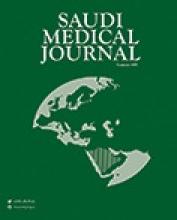Abstract
OBJECTIVE: To evaluate the levels of some essential elements in thalassemic patients in Mosul, Iraq.
METHODS: One hundred and five thalassemic blood transfusion dependent children, 2.5-18 years of age attending Ibn-Al-Atheer teaching hospital in Mosul City, Iraq, during 2005, were used in this study. Fifty-four healthy subjects served as a control group. Patients were allocated in a non-randomized prospective cross-sectional hospital based study. Essential elements levels were estimated. The mean, standard deviation, correlation coefficient, and z-test were used. P-values <0.05 were considered statistically significant.
RESULTS: Low serum zinc, and magnesium, and high serum copper, and potassium levels were found among the 105 thalassemic patients compared to the 54 controls. Levels of calcium, phosphate, and sodium were within normal limits.
CONCLUSION: Fluctuations in the essential elements levels seem to be related to the different complications associated with the disease. Zinc deficiency may be attributed to hyperzincuria resulted from the release of Zn from hemolyzed red cells. Hypercupremia occurs in acute and chronic infections and hemochromatosis, which is a principal complication of thalassemia. Increased Na levels may be due to renal damage. Hypomagnesemia may occur due to hypoparathyroidism.
- Copyright: © Saudi Medical Journal
This is an open-access article distributed under the terms of the Creative Commons Attribution-Noncommercial-Share Alike 3.0 Unported, which permits unrestricted use, distribution, and reproduction in any medium, provided the original work is properly cited.






